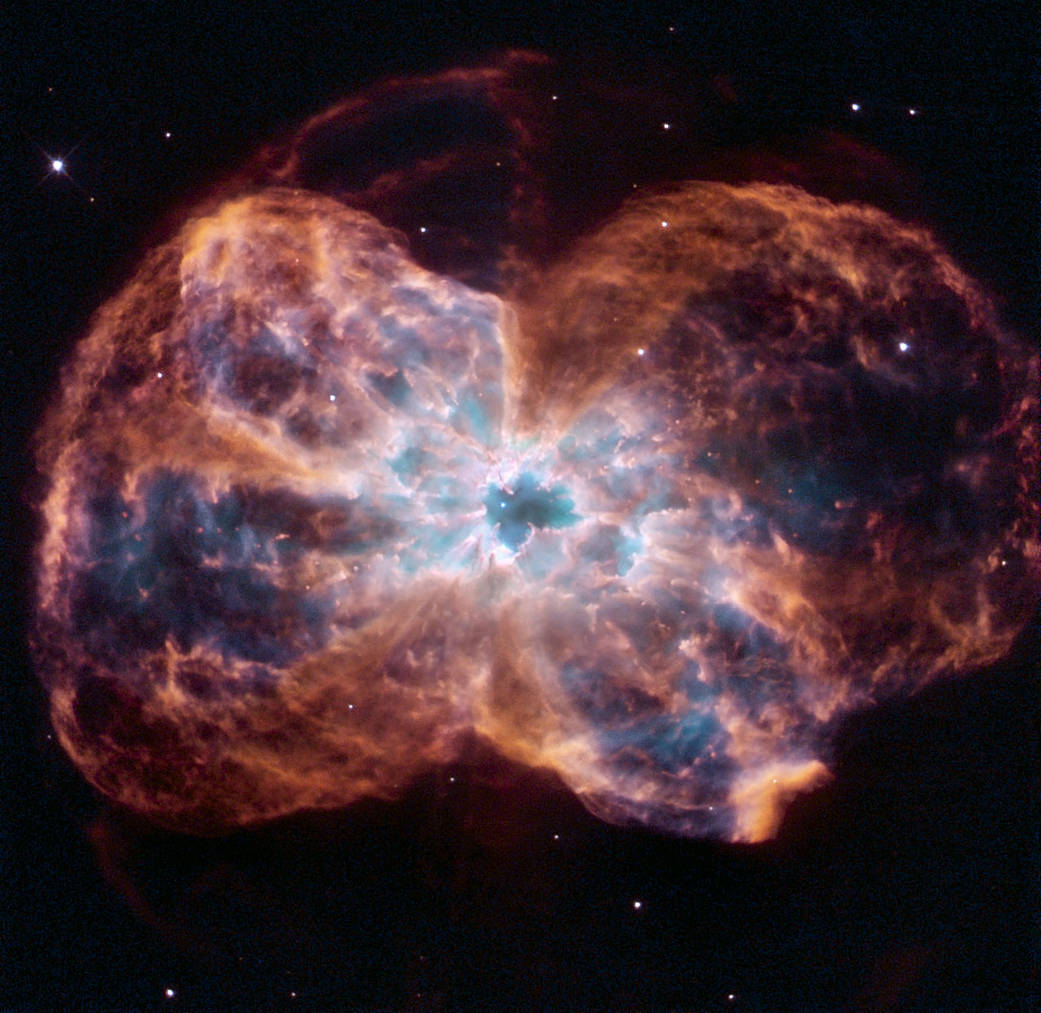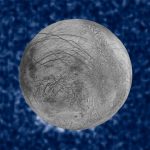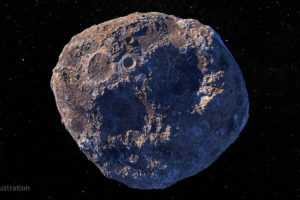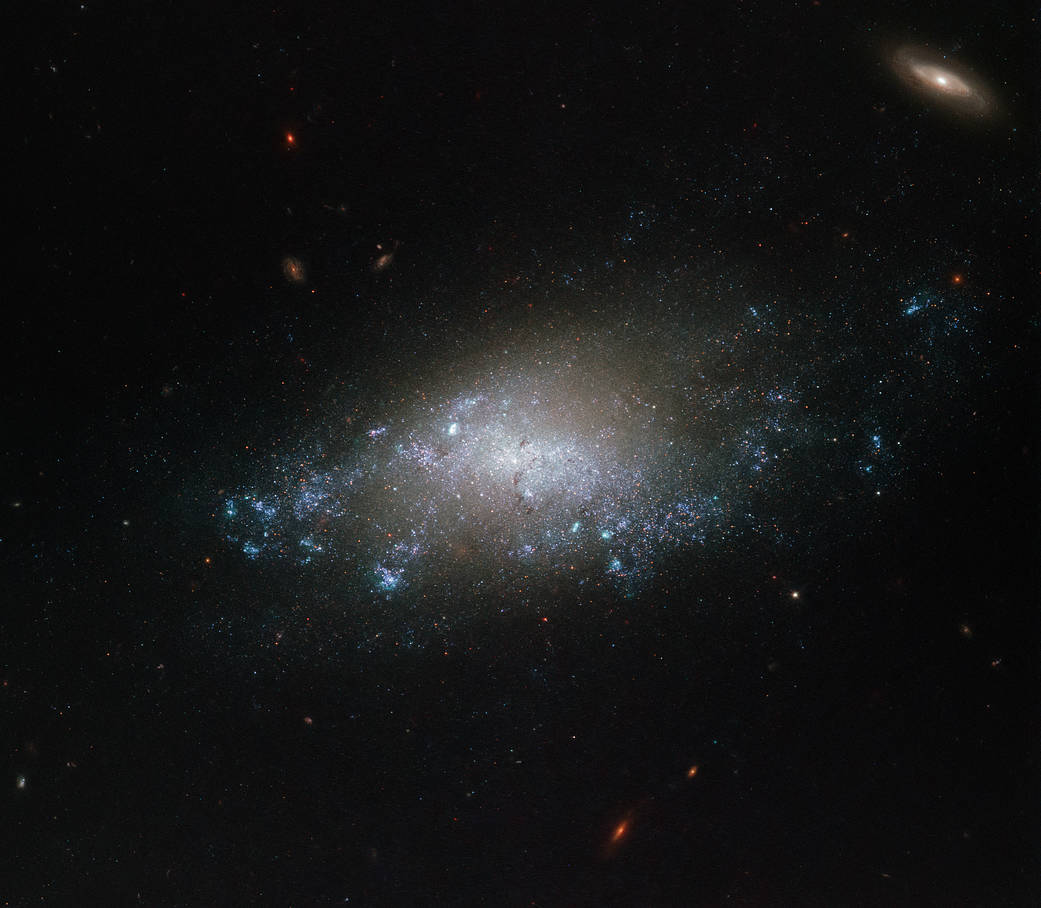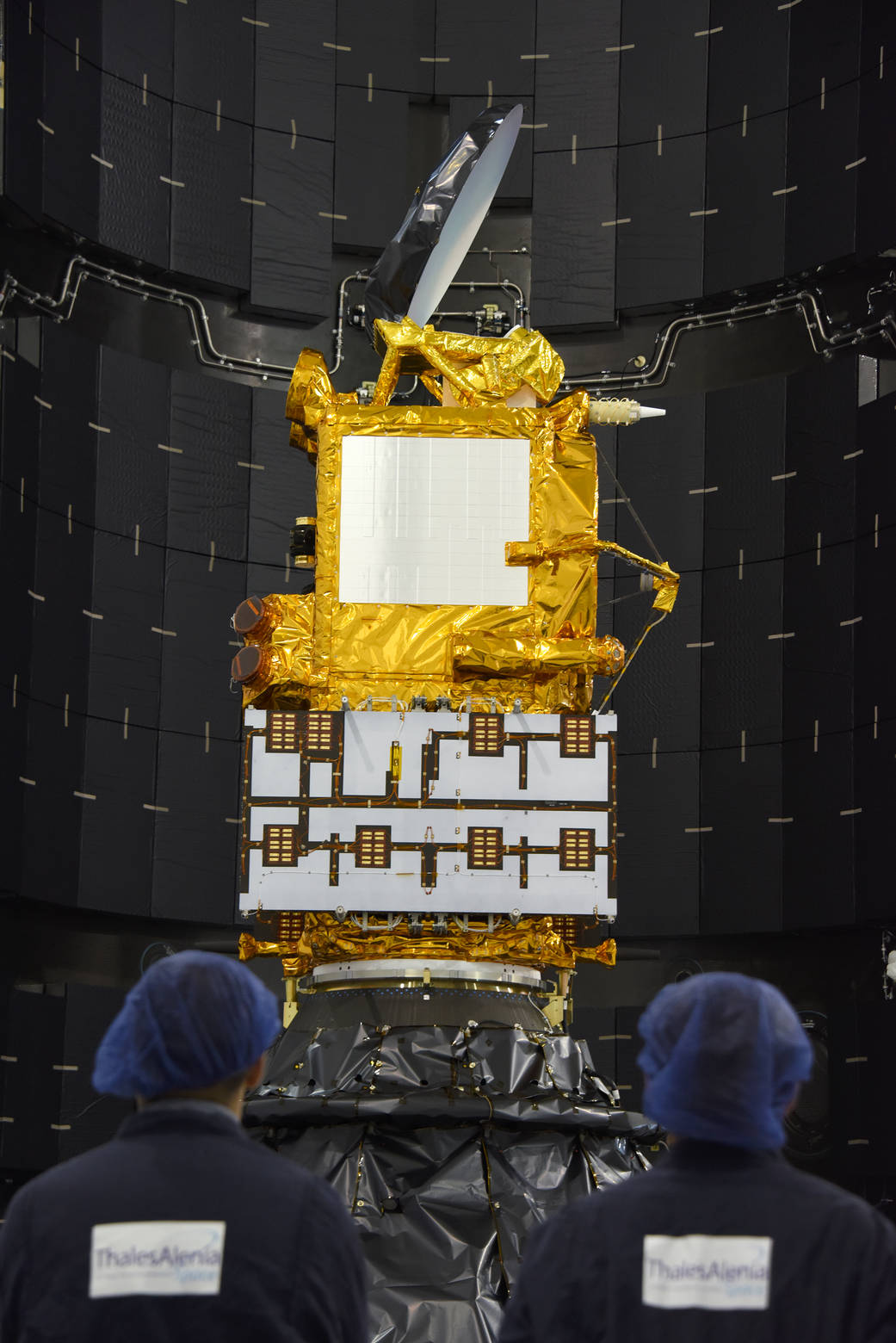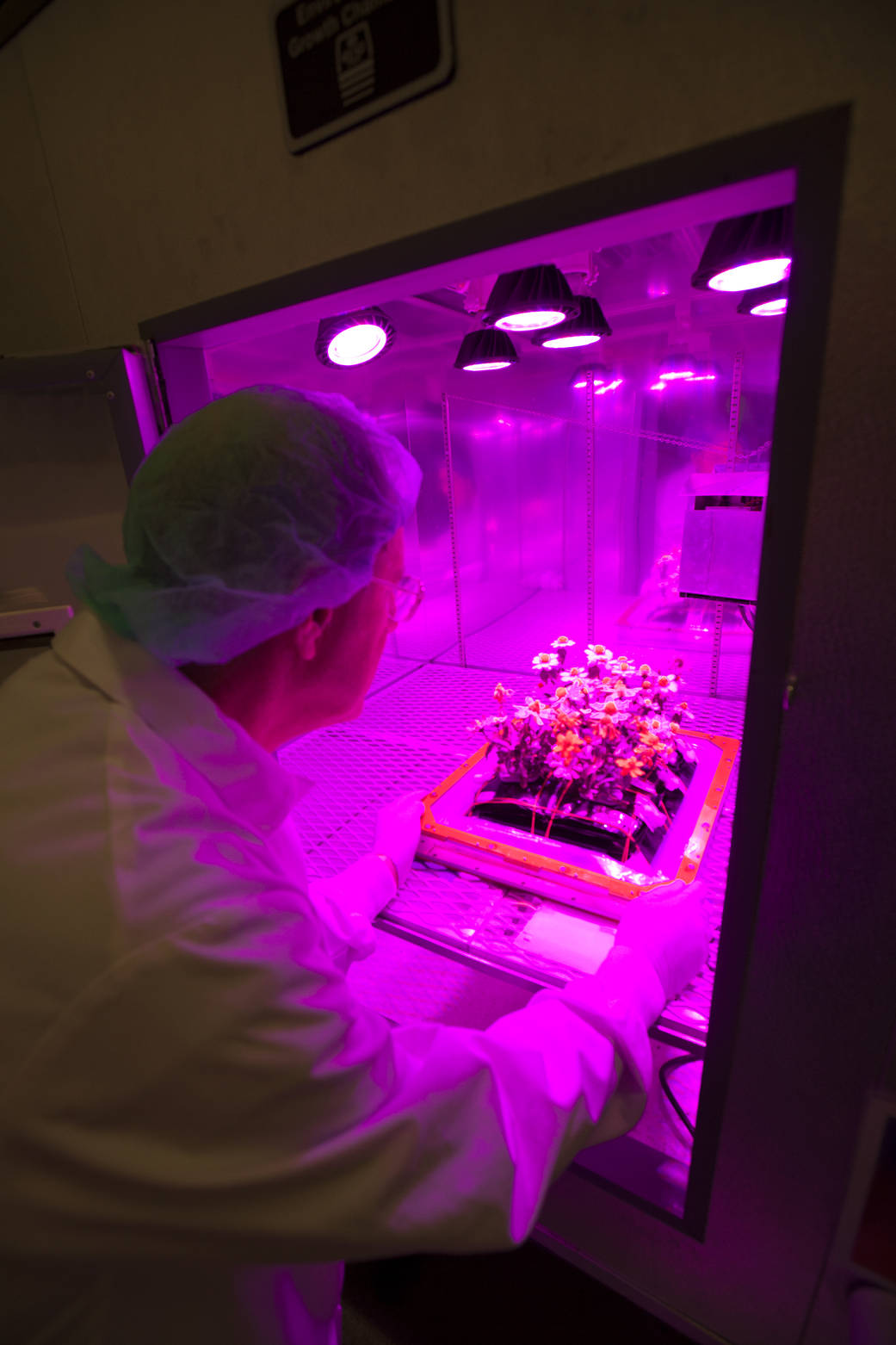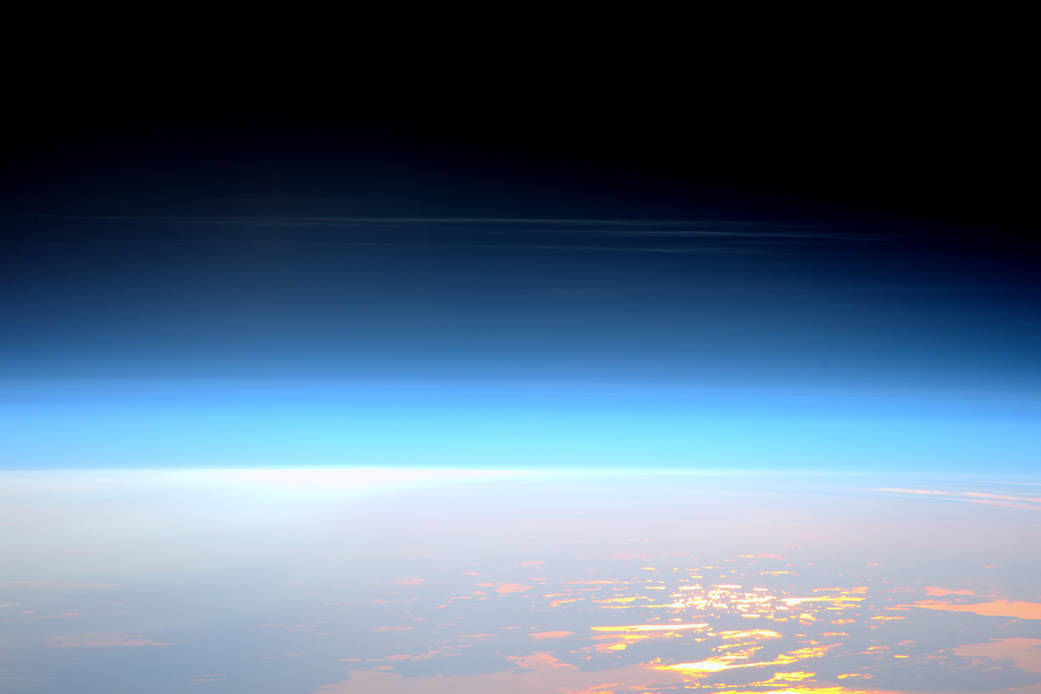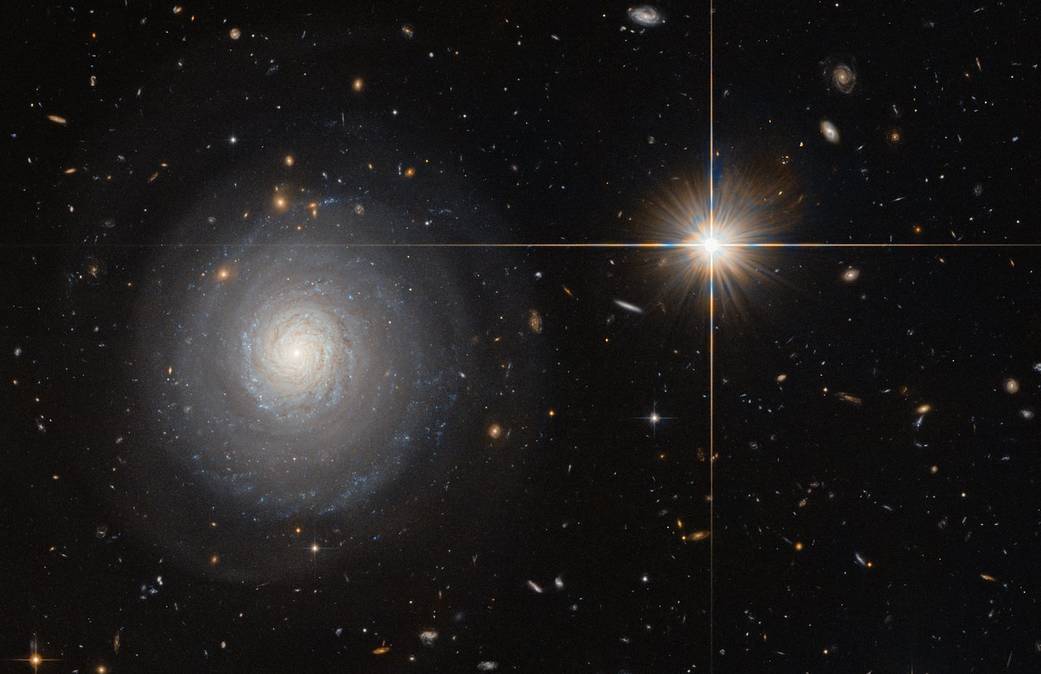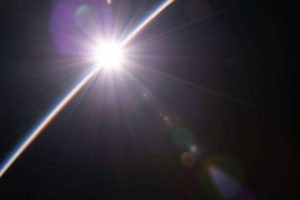オリジナル記事:Hubble Views a Colorful Demise of a Sun-like Star
This image, taken by the NASA/ESA Hubble Space Telescope, shows the colorful “last hurrah” of a star like our sun. The star is ending its life by casting off its outer layers of gas, which formed a cocoon around the star’s remaining core. Ultraviolet light from the dying star makes the material glow. The burned-out star, called a white dwarf, is the white dot in the center. Our sun will eventually burn out and shroud itself with stellar debris, but not for another 5 billion years.
Our Milky Way Galaxy is littered with these stellar relics, called planetary nebulae. The objects have nothing to do with planets. Eighteenth- and nineteenth-century astronomers called them the name because through small telescopes they resembled the disks of the distant planets Uranus and Neptune. The planetary nebula in this image is called NGC 2440. The white dwarf at the center of NGC 2440 is one of the hottest known, with a surface temperature of more than 360,000 degrees Fahrenheit (200,000 degrees Celsius). The nebula’s chaotic structure suggests that the star shed its mass episodically. During each outburst, the star expelled material in a different direction. This can be seen in the two bowtie-shaped lobes. The nebula also is rich in clouds of dust, some of which form long, dark streaks pointing away from the star. NGC 2440 lies about 4,000 light-years from Earth in the direction of the constellation Puppis.
The material expelled by the star glows with different colors depending on its composition, its density and how close it is to the hot central star. Blue samples helium; blue-green oxygen, and red nitrogen and hydrogen.
Credits: NASA, ESA, and K. Noll (STScI), Acknowledgment: The Hubble Heritage Team (STScI/AURA)
Last Updated: Sept. 24, 2016
Editor: Karl Hille
太陽のような星のカラフルな終焉をハッブルで見ると...
この画像は、NASA/ESAのハッブル宇宙望遠鏡でみた太陽のような星のカラフルな「有終の美」です。星は、最後に残った星の核の部分の周囲に繭のように取り巻いたガスを脱ぎ払ってその生命を終えます。死にゆく星の物質から紫外線が放たれます。中心の白い点が、白色矮星と呼ばれる燃え尽きた星です。私たちの太陽もいずれは燃え尽きて、自分自身の残骸で死衣装を纏うことになるのですが50億年先のことになります。
私たちの天の川銀河は、こうした星々の残骸が散らばってできた惑星状星雲と呼ばれるものです。これらの物質は、惑星とは何の関係もありません。18世紀から19世紀の天文学者は、小さな望遠鏡を通してかるか遠くにある惑星の天王星と海王星を円盤に見立てて名前を付けいています。この画像の惑星状星雲はNGC 2440といいます。NGC 2440の中心にある白色矮星は最も熱いことで知られ、表面温度が華氏360,000度(摂氏20万度)以上あります。星雲の混沌とした様子は、星が無作為の方向に破裂したことを示唆しています。爆発時には、星が様々な方向に物質を放出します。あたかも2つの蝶ネクタイのようにも見えます。星雲は塵でできた雲がたくさんあって、長くて暗い縞模様の尾を引いています。NGC 2440は、とも座の方向に地球から約4,000光年の位置にあります。
星から放出された物質は、その組成、密度と、どれだけ中心に近いかで、異なる色で輝きます。青色はヘリウム。青緑色は酸素、そして赤色は窒素と水素を示しています。
